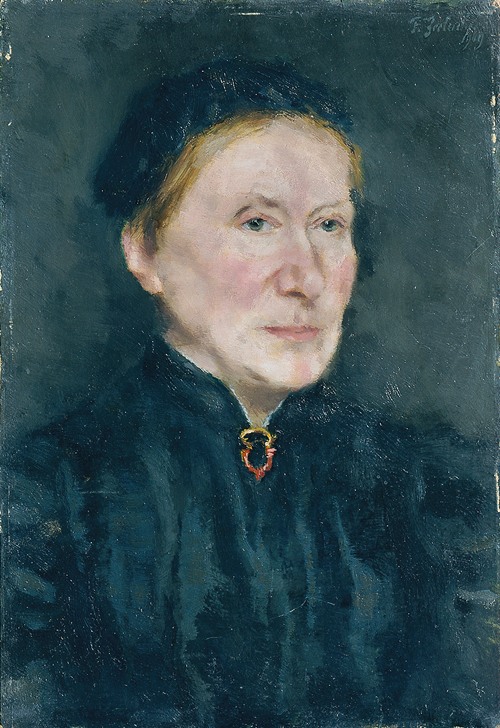

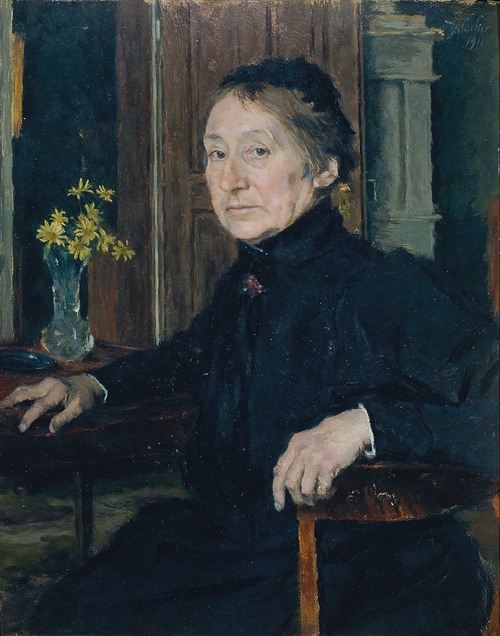
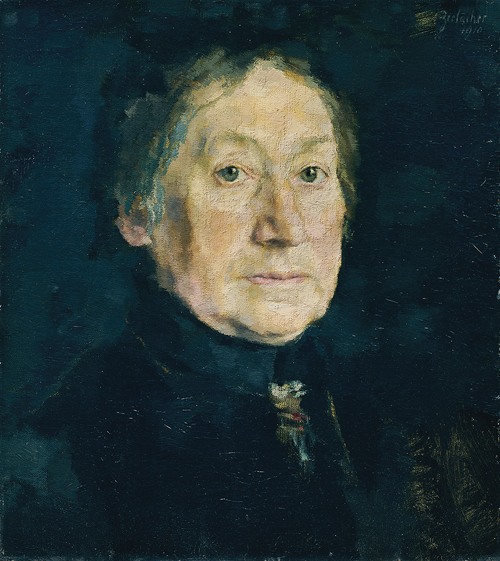

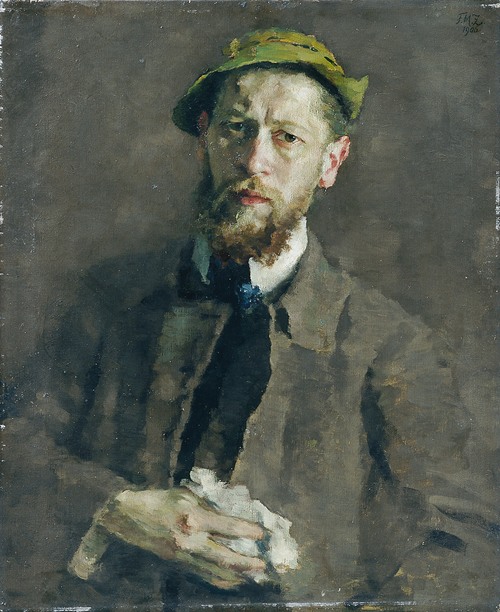
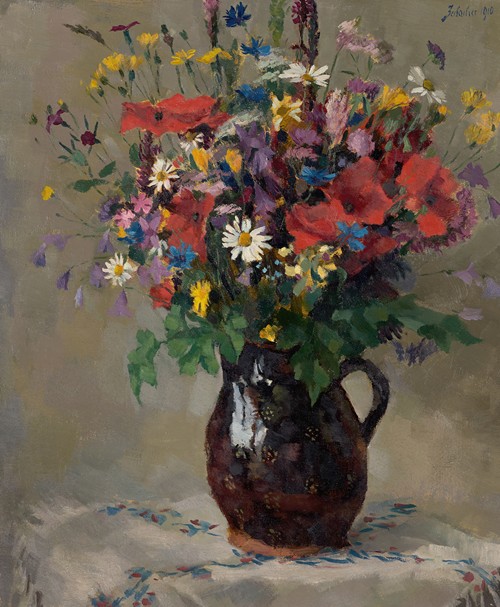


Ferdinand Matthias Zerlacher was an Austrian painter and draughtsman.
Zerlacher was born the son of the unmarried waitress Anna Zerlacher and the wood sculptor Matthias Mayer (1852-1897). After the early death of his mother, he grew up in poor circumstances with relatives on his father's side. His father is said to have been a gifted artist, but also an alcoholic. He was allowed to exhibit his first childish works in his aunt's tobacconist's shop and in 1892 was offered a free place at the Styrian Academy of Drawing in Graz, where he studied under Heinrich Schwach. Here he also met the Viennese university professor Gustav Ritter von Gerl (1841-1920), with whom he and his sisters Marie and Emma formed a lifelong friendship.
Through their intercession, he was admitted to the Academy of Fine Arts Vienna in 1897. Here he initially studied under Julius Victor Berger, but switched to Alois Delug's department in the fall of 1898. Due to several disagreements, he left the academy in the summer semester of 1899 and continued his studies on a self-taught basis. He was financed by his patron Gustav von Gerl and then lived with his sisters at Himmerpfortgasse 9, thanks to whom he had contacts in Vienna's high society, who appreciated him as a portraitist.
In the following years, he produced around 50 pictures, mostly portraits, executed in various techniques (drawings, oil paintings, oil pastels, mixed media). In the summer of 1899, he stayed in Perchtoldsdorf with his mother's friends and met the sculptor Alfred Hofmann (1879-1958), with whom he developed a close artistic relationship. He traveled to Galicia several times at the invitation of an imperial and royal officer. He traveled to Galicia several times at the invitation of an imperial and royal officer and perfected his portrait techniques there. In the summer of 1900, he devoted himself to various experiments in painting technique and the study of old masters in the Kunsthistorisches Museum; copies of old masters (Titian, Antonio González Velázquez, Andrea Mantegna) would also play a role in his later work. On a trip to Salzburg and Munich, he was able to study the paintings of Wilhelm Leibl (1844-1900), an important representative of realism. In the summer of 1901, he spent a summer retreat in Nußdorf am Attersee, a place he would later often stay. Here he painted portraits of summer guests and locals, as well as landscapes.
Many of his sketches, which he considered worthless, were destroyed by him, which he later regretted. His largest work in terms of surface area was also created here, the theater curtain for the Nußdorf Dilletantentheater, a triptych with a musician with a zither in the center and views of Nußdorf and Lake Attersee with the Höllengebirge mountains to the right and left. In Nußdorf, he also performed publicly as a violinist to rapturous applause at a farewell concert for the blind colony in the Nußdorfer Bräuhaus. He developed an excessive alcohol consumption, but despite his escapades he was supported by his mother's friends and his fellow artists Alfred Hofmann and Sigmund Walter Hampel (1876-1949). From 1905 onwards, Nußdorf experienced a particularly productive creative phase, painting landscapes as well as portraits.
However, he was also unsuccessful: his painting "Self-Portrait with the Green Hat", created for the 1906 spring exhibition at the Vienna Künstlerhaus, was rejected. But a year later, he sent a selection of his pictures to the Secession and his self-portrait was actually exhibited and received positive critical acclaim. He became a full member of the Secession in 1910 and his works were regularly exhibited there. Further exhibitions of his paintings took place in Berlin and Dresden, but without any sales success. In 1913, Zerlacher completed a life-size work "Weiblicher Rückenakt", which was shown at the Secession's XLVII exhibition and met with critical acclaim. In 1913, he traveled to Budweis to complete a major commission (twelve portraits of dignitaries and a portrait of Emperor Franz Josef I, replaced in 1918 by a coat of arms of the city of Budweis with a view of the town hall).
Zerlacher had to serve in the First World War and was sent to the Italian front as a telephone operator in the Isonzo region. During this time, he also produced pictures of landscapes and portraits of officers and comrades. In 1917, he was ordered to create an altarpiece for the military cemetery in Raibl. However, only the middle section of the triptych was completed. In 1918, exhausted, he returned to Vienna and once again found shelter in Himmelpfortgasse.
In Vienna, he resumes his work as a portraitist. He produced a life-size portrait of the Salzburg Kammersänger Richard Mayr, which is now in the Salzburg Museum. In 1920, he spent several months in Graz and Frohnleiten, where he carried out commissions from the merchant families Kastner and Öhler, and also produced a series of floral still lifes. In July 1922, he was back in Nußdorf; he sought treatment from Dr. Woerz in Unterach am Attersee, who diagnosed him with pulmonary tuberculosis. He is taken to St. Johann's Hospital in Salzburg, where he dies on January 2, 1923. Zerlacher's possessions, a small reference library and around 15 of his paintings, went to his bride Helene Bauer, but nothing more is known about her.
In 1923, a large exhibition of Zerlacher's work was planned for the Secession's winter exhibition; due to his death, this became a memorial exhibition, for which many of his works were made available by his circle of friends, including a number of his self-portraits.






